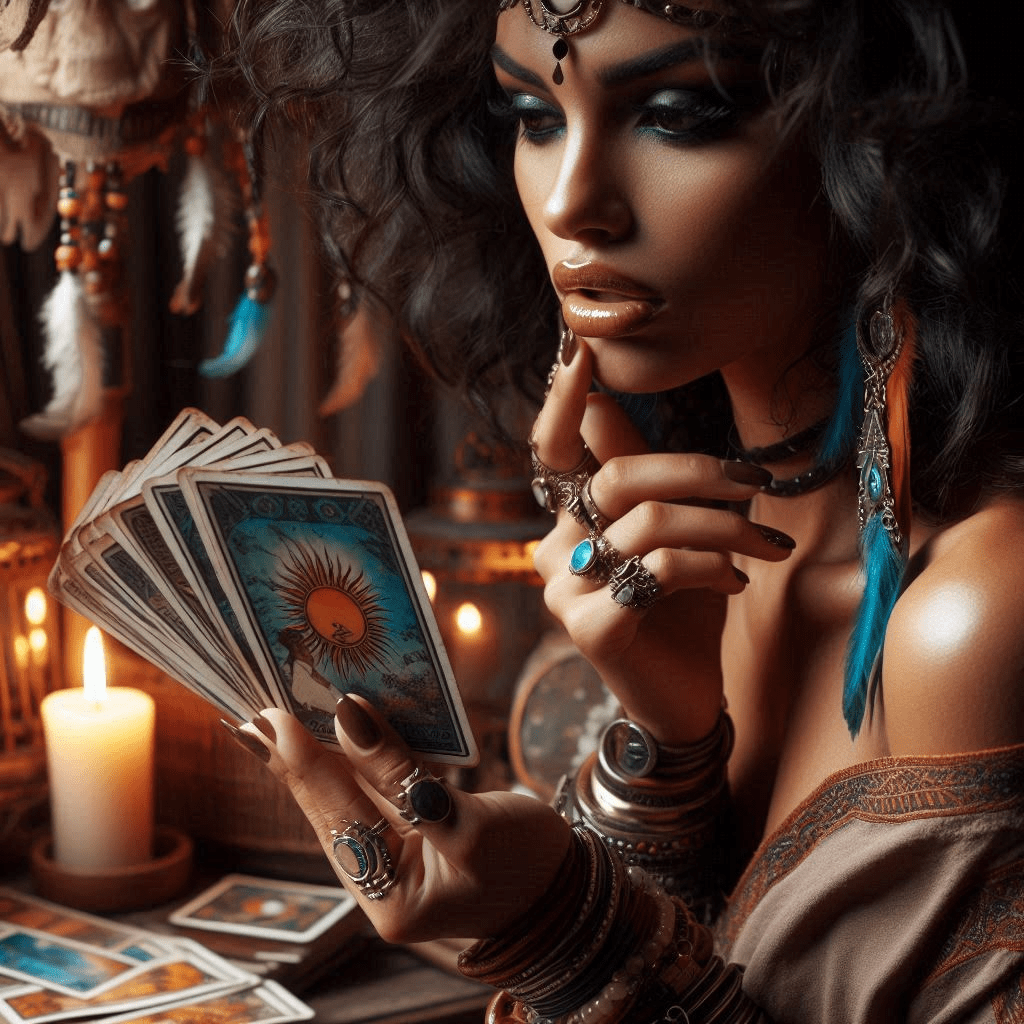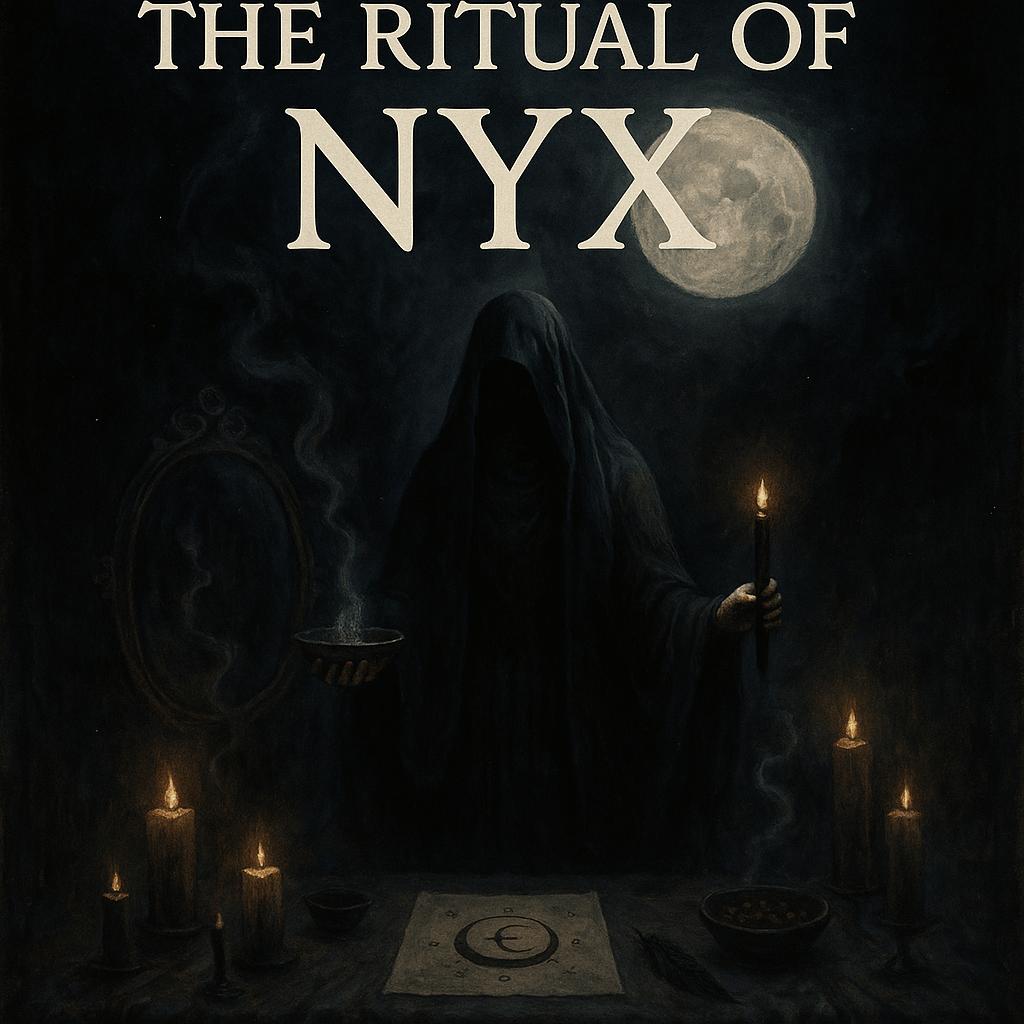Your cart is currently empty!

Piercing the veil: An introduction to Tarot Reading
Tarot reading is an ancient and captivating practice that has enthralled seekers of truth for centuries. Whether you are searching for guidance, self-discovery, or a deeper connection with the mystical, tarot cards offer a powerful and unique tool to illuminate your path. This blog post will introduce you to the basics of tarot reading and help you take your first steps into this enigmatic world.
What is Tarot?
Tarot is a deck of 78 cards, each imbued with rich imagery, symbolism, and narratives that speak to the soul. The deck is divided into two main sections: the Major Arcana and the Minor Arcana. The Major Arcana consists of 22 cards representing significant life events and spiritual lessons. In contrast, the Minor Arcana includes 56 cards divided into four suits (Cups, Pentacles, Swords, and Wands), each portraying different facets of daily life.
The Major Arcana cards, such as The Fool, The Magician, The High Priestess, and The World, symbolize the journey through different stages of life and spiritual growth. Each card in the Major Arcana holds deep meanings and universal truths, guiding us through transformations and enlightenment.
The Minor Arcana, on the other hand, represents more specific, everyday aspects of life. Each suit corresponds to a different element and area of experience:
- Cups: Represent emotions, relationships, and intuition, aligned with the element of Water.
- Pentacles: Reflect material aspects, career, and financial matters, associated with the element of Earth.
- Swords: Symbolize intellect, communication, and conflict, resonating with the element of Air.
- Wands: Embody creativity, passion, and action, linked to the element of Fire.
Choosing Your Tarot Deck
Selecting a tarot deck is a deeply personal and intuitive process. While the Rider-Waite-Smith deck is popular for beginners due to its clear imagery and symbolism, countless other decks resonate with different energies. Choose one that visually and spiritually captivates you. Spend time with your deck, getting to know each card and its unique characteristics, and let it reveal its secrets.
To further personalize your deck, consider consecrating it with a ritual. This could involve charging it under the light of a full moon, smudging it with sage to cleanse previous energies, or anointing it with essential oils to attune it to your vibrations. This practice will deepen your bond with the deck and enhance your readings.
Preparing for a Reading
- Set Your Intention: Before you begin reading, take a moment to clear your mind and set a clear intention. What do you hope to gain from the reading? Whether it’s insight into a specific situation or general guidance, having a focused intention will help you connect more deeply with the cards.
- Create a Sacred Space: Find a quiet, comfortable place where you won’t be disturbed. Light a candle, burn some incense, or play soft, ambient music to create a calming atmosphere. Surround yourself with objects that hold personal significance and evoke a sense of sacredness.
- Shuffle the Cards: Shuffling the cards helps to clear any previous energies and infuse them with your own. There is no right or wrong way to shuffle; do what feels natural to you. As you shuffle, concentrate on your intention, letting the cards absorb your energy.
Basic Tarot Spreads
- One-Card Pull: This simple spread is perfect for daily guidance or quick insights. Focus on your question, shuffle the deck, and draw a single card. Reflect on its meaning and how it relates to your situation. Let the imagery and symbols speak to you, revealing hidden truths.
- Three-Card Spread: This spread provides a more detailed look at a situation. The three cards represent the past, present, and future, or mind, body, and spirit. Interpret each card in the context of its position, unraveling the narrative they weave together.
- Celtic Cross Spread: A more complex spread, the Celtic Cross offers a comprehensive view of a situation. It consists of ten cards, each representing different aspects of the query. This spread is ideal for in-depth readings and exploring multiple facets of an issue, providing profound insights into the hidden layers of your journey.
Advanced Tarot Spreads
Once you’re comfortable with the basics, you may want to explore more advanced tarot spreads. These can offer deeper insights and help you navigate more complex situations.
- The Star Spread: This spread is useful for understanding the underlying influences and hidden factors affecting a situation. It consists of eight cards arranged in the shape of a star, each representing different aspects such as the present situation, hidden influences, obstacles, and advice.
- The Horseshoe Spread: This seven-card spread is ideal for gaining insights into the past, present, and future, as well as understanding the internal and external influences on a situation. It provides a balanced perspective, helping you make informed decisions.
- The Astrological Spread: This twelve-card spread aligns with the twelve houses of astrology, offering a comprehensive view of different areas of your life, including career, relationships, health, and spiritual growth. It’s a powerful tool for holistic guidance and self-awareness.
Historical Examples and Data
Tarot cards have a rich and storied history that spans centuries. The origins of tarot are often traced back to the 15th century in Europe, specifically in Italy, where the earliest known tarot decks were created. These early decks, known as “Tarocchi,” were used for playing a card game rather than for divination. It wasn’t until the 18th century that tarot began to be used for mystical and divinatory purposes.
One of the most significant figures in the history of tarot is Antoine Court de Gébelin, an 18th-century French clergyman and Freemason. He published a multi-volume work titled “Le Monde Primitif” in which he argued that tarot cards were of ancient Egyptian origin and contained hidden esoteric knowledge. Although his theories were largely speculative, they played a crucial role in popularizing the use of tarot for divination and mystical purposes.
In the late 19th and early 20th centuries, the Hermetic Order of the Golden Dawn, a secret society devoted to the study of the occult, further expanded the symbolic and mystical aspects of tarot. Members of the Golden Dawn, including Arthur Edward Waite, Pamela Colman Smith, and Aleister Crowley, created some of the most well-known and influential tarot decks, such as the Rider-Waite-Smith deck and the Thoth Tarot.
Interpreting the Cards
Interpreting tarot cards involves a blend of intuition and knowledge of traditional meanings. Begin by observing the imagery and symbols on the card. What feelings or thoughts do they evoke? Then, consider the card’s traditional meaning and how it applies to your question. Allow your intuition to guide you, forming a dialogue between you and the cards. Over time, you’ll develop your interpretations and deepen your connection with the mystical energies they embody.
Developing Your Tarot Practice
As you become more familiar with the cards, consider keeping a tarot journal to record your readings, insights, and personal interpretations. This practice can help you track your progress and notice patterns over time. Meditating on the cards and practicing regularly will enhance your intuition and deepen your understanding of their meanings.
Engage with the tarot community by joining online forums, attending workshops, or participating in group readings. Sharing your experiences and learning from others can provide new perspectives and further enrich your tarot journey.
Tips for Enhancing Your Readings
- Trust Your Intuition: While traditional meanings are important, your intuition is your most powerful tool. Trust your gut feelings and let them guide you.
- Practice Regularly: The more you practice, the more comfortable and confident you will become with your readings. Make tarot a part of your daily routine to deepen your connection with the cards.
- Stay Open-Minded: Tarot is a tool for exploration and self-discovery. Stay open to the messages the cards have for you, even if they are unexpected or challenging.
- Seek Feedback: Reading for others can provide valuable feedback and help you refine your skills. Ask for feedback from those you read to improve your practice and skills.
Conclusion
Embrace the journey of tarot reading and let it guide you through the shadows and light of your life. Each card is a portal to the unknown, a whisper from the divine. May your path be illuminated with wisdom, and may the mysteries of the tarot unfold before you, revealing their secrets and guiding you toward your true self. 🌙✨
By immersing yourself in the art of tarot, you open the door to a deeper understanding of yourself and the universe. Allow the cards to be your companions on this mystical journey, offering insights, guidance, and a connection to the divine.






